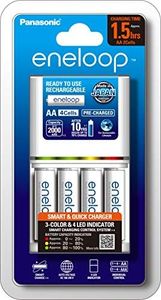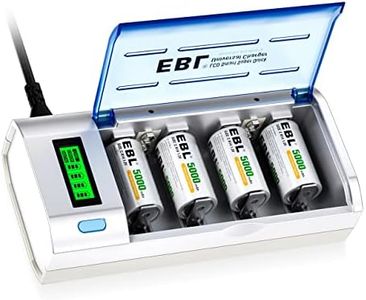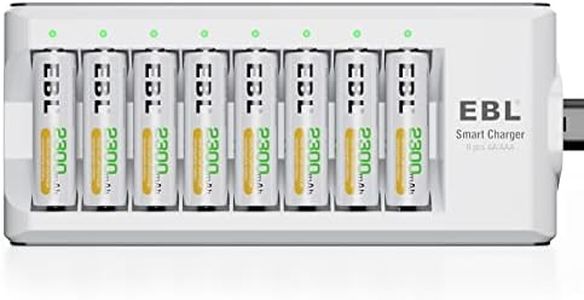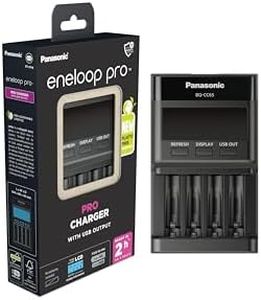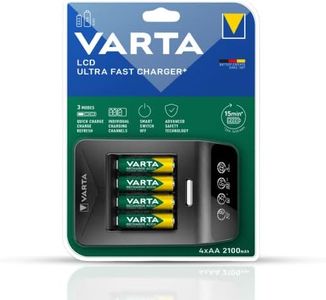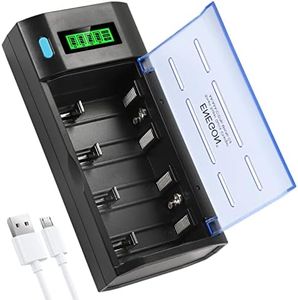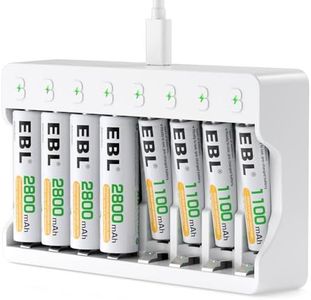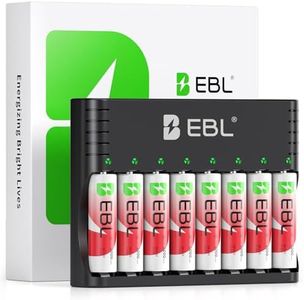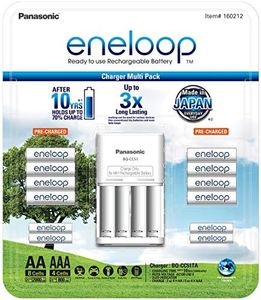We Use CookiesWe use cookies to enhance the security, performance,
functionality and for analytical and promotional activities. By continuing to browse this site you
are agreeing to our privacy policy
10 Best Aa Aaa Battery Chargers
From leading brands and best sellers available on the web.Buying Guide for the Best Aa Aaa Battery Chargers
Choosing the right AA/AAA battery charger is important for keeping your rechargeable batteries healthy and your devices powered up. The right charger should fit your usage habits, battery types, and preferences for speed and convenience. It's worth understanding which basic features matter most, as your needs might be very different if you're charging a few batteries at home occasionally, or regularly powering lots of gadgets.Battery CompatibilityThis refers to which types of batteries (such as AA, AAA, NiMH, or NiCd) the charger can handle. Compatibility is crucial because not every charger can charge all battery types. Some charge both AA and AAA sizes, while others may only do one or the other. Similarly, certain chemical types like NiMH are more common and eco-friendly, so many modern chargers focus on these. When choosing, think about the batteries you already own or plan to use; select a charger that matches both the sizes and chemistry.
Number of Charging SlotsThis is the maximum number of batteries you can charge at once. Chargers range from simple models that handle 2 batteries to larger ones accommodating 4, 8, or even more. If you frequently use many devices that require batteries, or need to charge multiple batteries together, pick a charger with more slots. For occasional or minimal use, 2 or 4 slots is usually enough. Think about how many batteries your household regularly needs powered and let that guide your choice.
Charging SpeedCharging speed, often measured in milliamps (mA), determines how quickly your batteries will be recharged. Fast chargers save time but can generate more heat, which in the long run may affect battery lifespan. Slow chargers are gentler and may extend battery life but require patience. Some chargers offer selectable speeds. If you always need quick batteries for cameras or toys, aim for a medium to fast charger. For less urgent uses or if you value longer battery life, slower charging may be better.
Individual Channel ChargingThis means whether the charger can monitor and charge each battery separately instead of in pairs or groups. Individual channel charging is handy because you can mix different brands, sizes, or charge levels and still get a proper recharge for each battery. If you often have batteries with different levels of charge left, or want maximum flexibility, look for this feature. Chargers without this will require you to pair batteries with similar power levels.
Safety FeaturesImportant safety mechanisms include automatic shutoff, overcharge protection, temperature monitoring, and short-circuit protection. These features help prevent overheating, battery damage, or safety hazards. If you plan to leave batteries charging overnight or use the charger in a busy environment, these protections are very valuable. Check for models advertising these features if peace of mind is important to you.
Display/IndicatorsMany chargers use lights or screens to show charging progress and battery status. Some keep it simple with a single LED per slot, while others give detailed information with an LCD display. Choose a model with clear indicators if you want to easily see charging status at a glance. For those who like simplicity, basic indicator lights may be enough.
Power SourceSome chargers plug directly into a wall outlet, while others can use USB power from a laptop, power bank, or car. There are also portable chargers for travel. Consider where and how you’ll mostly use the charger: if you want to charge on the go, USB compatibility might be best; for home use, a wall plug is often simplest.


